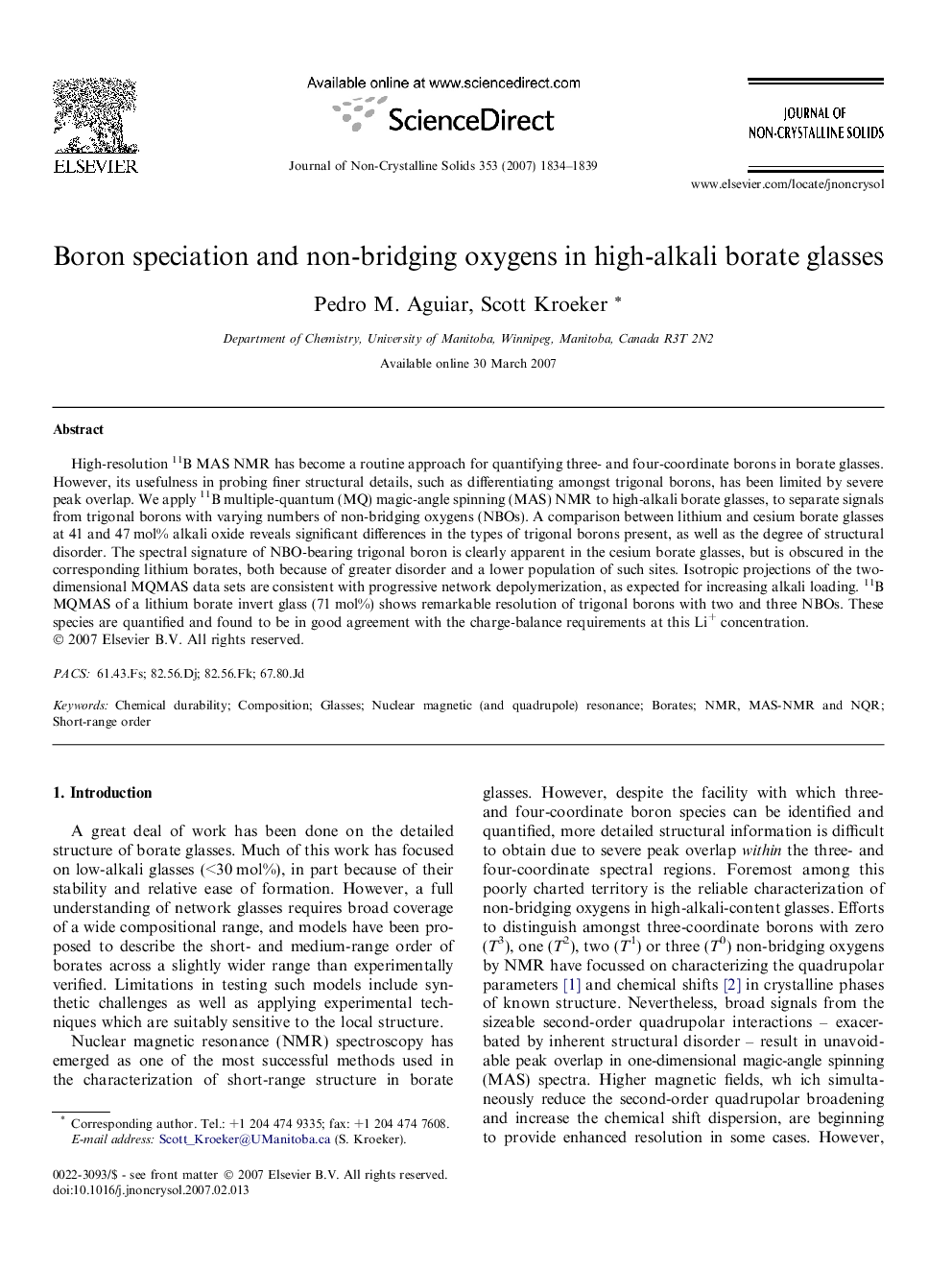| Article ID | Journal | Published Year | Pages | File Type |
|---|---|---|---|---|
| 1485366 | Journal of Non-Crystalline Solids | 2007 | 6 Pages |
High-resolution 11B MAS NMR has become a routine approach for quantifying three- and four-coordinate borons in borate glasses. However, its usefulness in probing finer structural details, such as differentiating amongst trigonal borons, has been limited by severe peak overlap. We apply 11B multiple-quantum (MQ) magic-angle spinning (MAS) NMR to high-alkali borate glasses, to separate signals from trigonal borons with varying numbers of non-bridging oxygens (NBOs). A comparison between lithium and cesium borate glasses at 41 and 47 mol% alkali oxide reveals significant differences in the types of trigonal borons present, as well as the degree of structural disorder. The spectral signature of NBO-bearing trigonal boron is clearly apparent in the cesium borate glasses, but is obscured in the corresponding lithium borates, both because of greater disorder and a lower population of such sites. Isotropic projections of the two-dimensional MQMAS data sets are consistent with progressive network depolymerization, as expected for increasing alkali loading. 11B MQMAS of a lithium borate invert glass (71 mol%) shows remarkable resolution of trigonal borons with two and three NBOs. These species are quantified and found to be in good agreement with the charge-balance requirements at this Li+ concentration.
